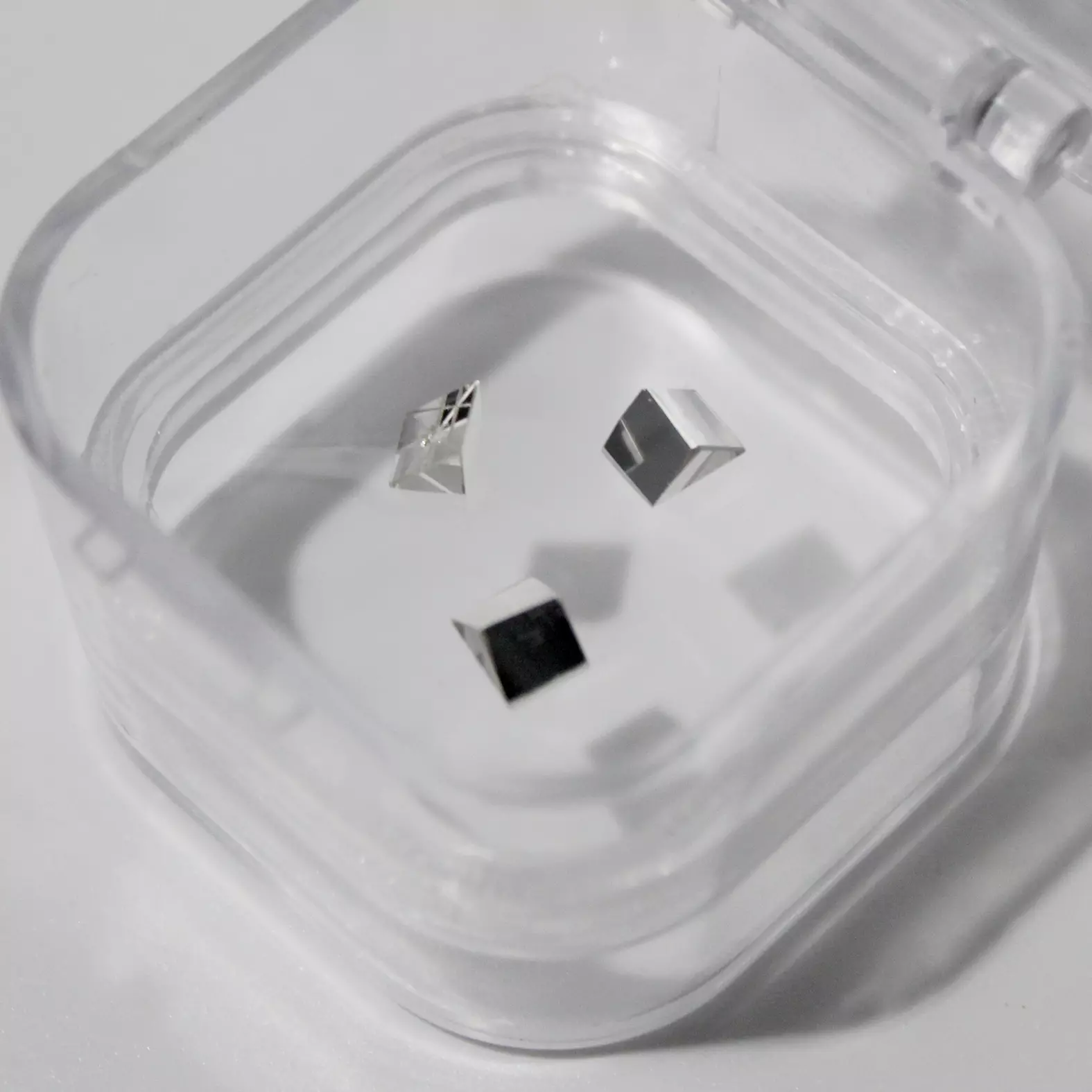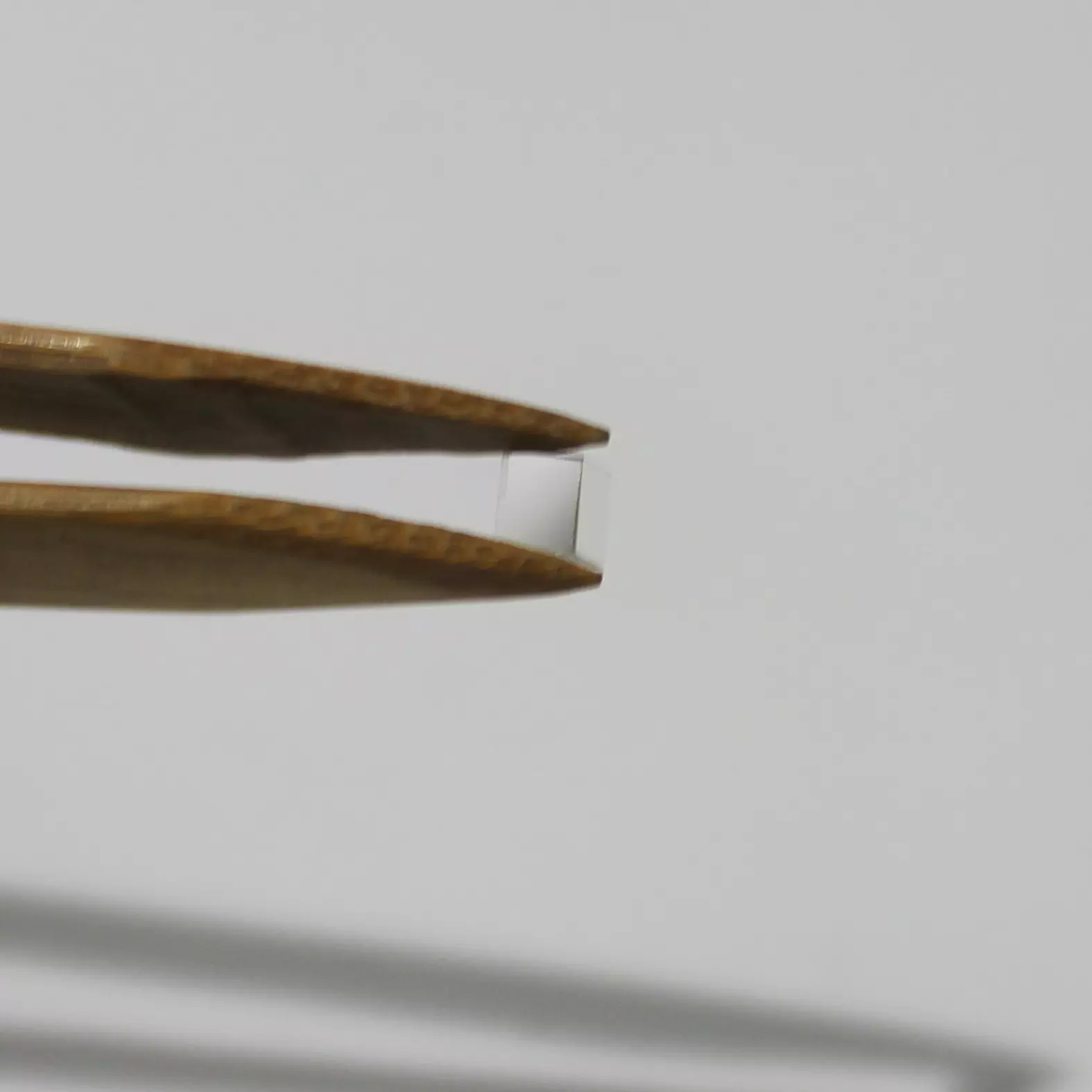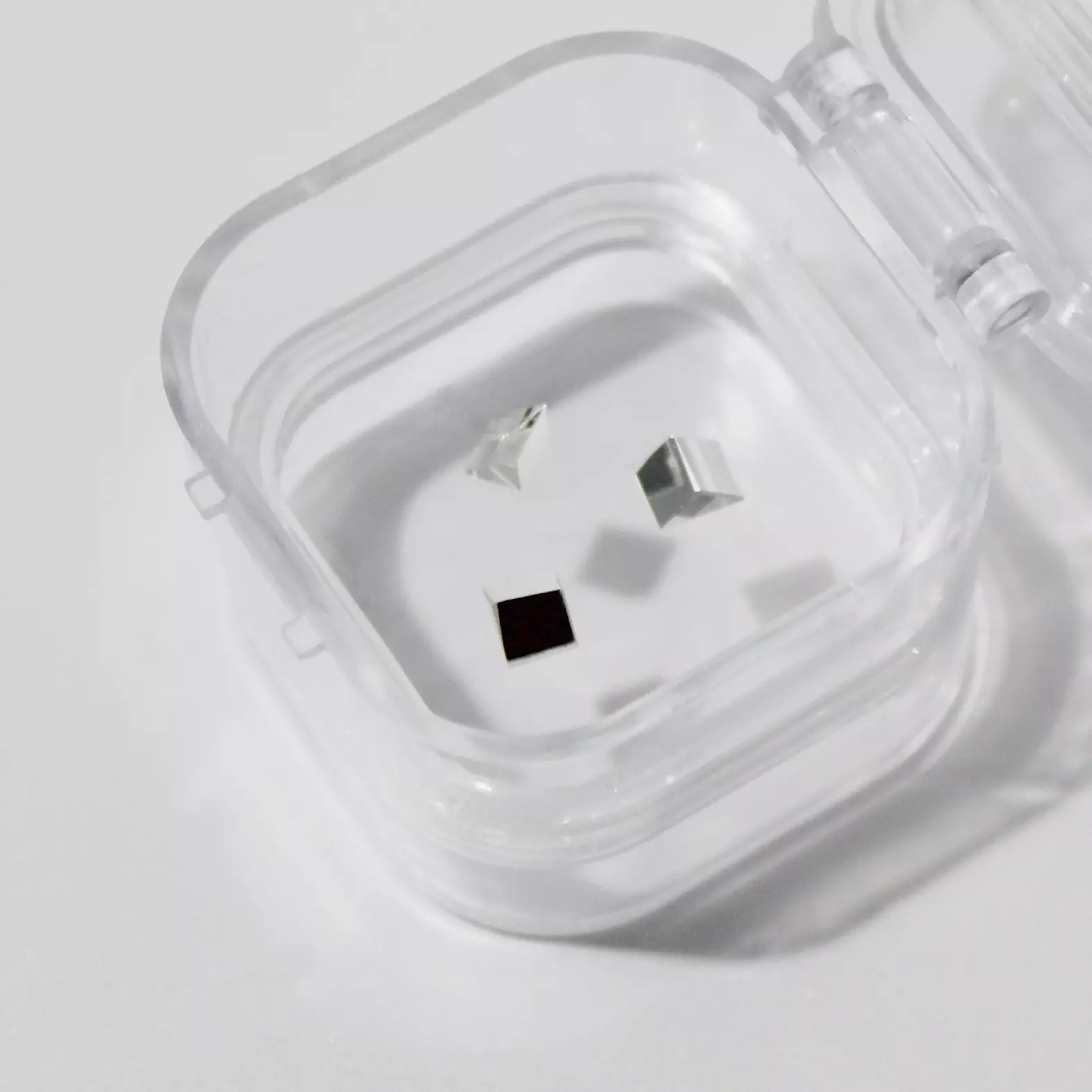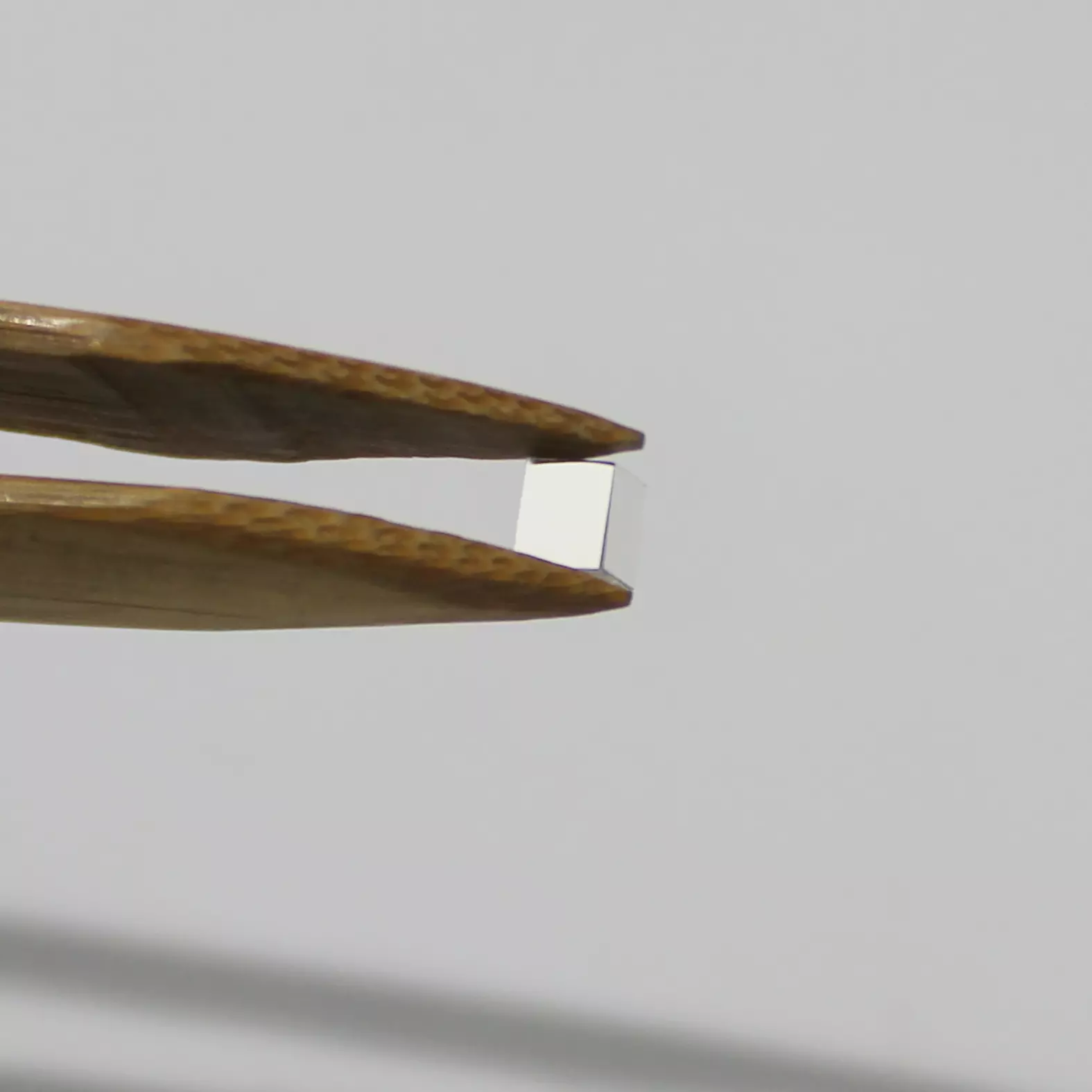Right-Angle Prism N-BK7 Glass Triangular Prism 3.5mm*3.5mm*3.5mm
Dimension: 10-200mm
Surface Accuracy: 60-40 or better
Size Tolerance: +/-0.1mm or better
Angle Tolerance: +/-3’or 30”
Coating: Optional
Optical prism is a transparent optical element with flat, polished surfaces that are designed to refract light. At least one surface must be angled — elements with two parallel surfaces are not prisms.
What is optical prism?
Prism, in optics, a piece of glass or other transparent material cut with precise angles and plane faces, useful for analyzing and reflecting light. An ordinary triangular prism can separate white light into its constituent colors, called a spectrum.
Characteristics of Prisms
Prism’s ability to be modeled as a system of plane mirrors in order to simulate the reflection of light within the prism medium.
Replacing mirror assemblies is perhaps the most useful application of prisms, since they both bend or fold light and change image parity.
Often, multiple mirrors are needed to achieve results similar to a single prism.
Therefore, the substitution of one prism in lieu of several mirrors reduces potential alignment errors, increasing accuracy and minimizing the size and complexity of a system.
Types of prisms
There are four main types of prisms: dispersion prisms, deviation, or reflection prisms, rotation prisms, and displacement prisms.
Deviation, displacement, and rotation prisms are common in imaging applications; dispersion prisms are strictly made for dispersing light, therefore not suitable for any application requiring quality images.
Dispersion Prisms
Optical prism dispersion is dependent upon the geometry of the prism and its index dispersion curve, based on the wavelength and index of refraction of the prism substrate.
The angle of minimum deviation dictates the smallest angle between the incident ray and the transmitted rays.
The green wavelength of light deviates more than red, and blue more than both red and green; red is commonly defined as 656.3nm, green as 587.6nm, and blue as 486.1nm.
Picture display of Optical Prism

Specifications of crystal prism
| Specifications | Data |
| Material | N-BK7 |
| Dimension | 3.5mm*3.5mm*3.5mm |
| Clear Aperture | 90% |
| Coating: Silver R avg | >92% (460±40nm) |
| Surface Flatness(P-V) | λ/8 |
People also ask
- How does a color cube work?
Each face of the translucent cube is coated in electromagnetically subtractive materials which at first, appear as cyan, magenta, or yellow. Twisting and turning the geometry creates new combinations, resulting in the appearance of new colours. - What is a CMYK cube?
Each “CMY Cube” has translucent sides colored with the three primary colors: cyan, magenta and yellow (CMY) and coated with special electromagnetically subtractive materials. With each twist and turn, these sides explode into a breathtaking array of stunning hues.
Our Ordering Process
Send us your request with detailed specifications
Receive a commercial offer with terms and costs
After your approval, we handle manufacturing, quality control, and shipping
📦 Shipping
3-5 days in EU, from 10 days to USA
💳 Payment methods
Cash, Bank Transfer, Cards (Visa, Mastercard, Amex, Discover) and PayPal
💬 Questions?
Contact us via WhatsApp, phone, live chat or email




